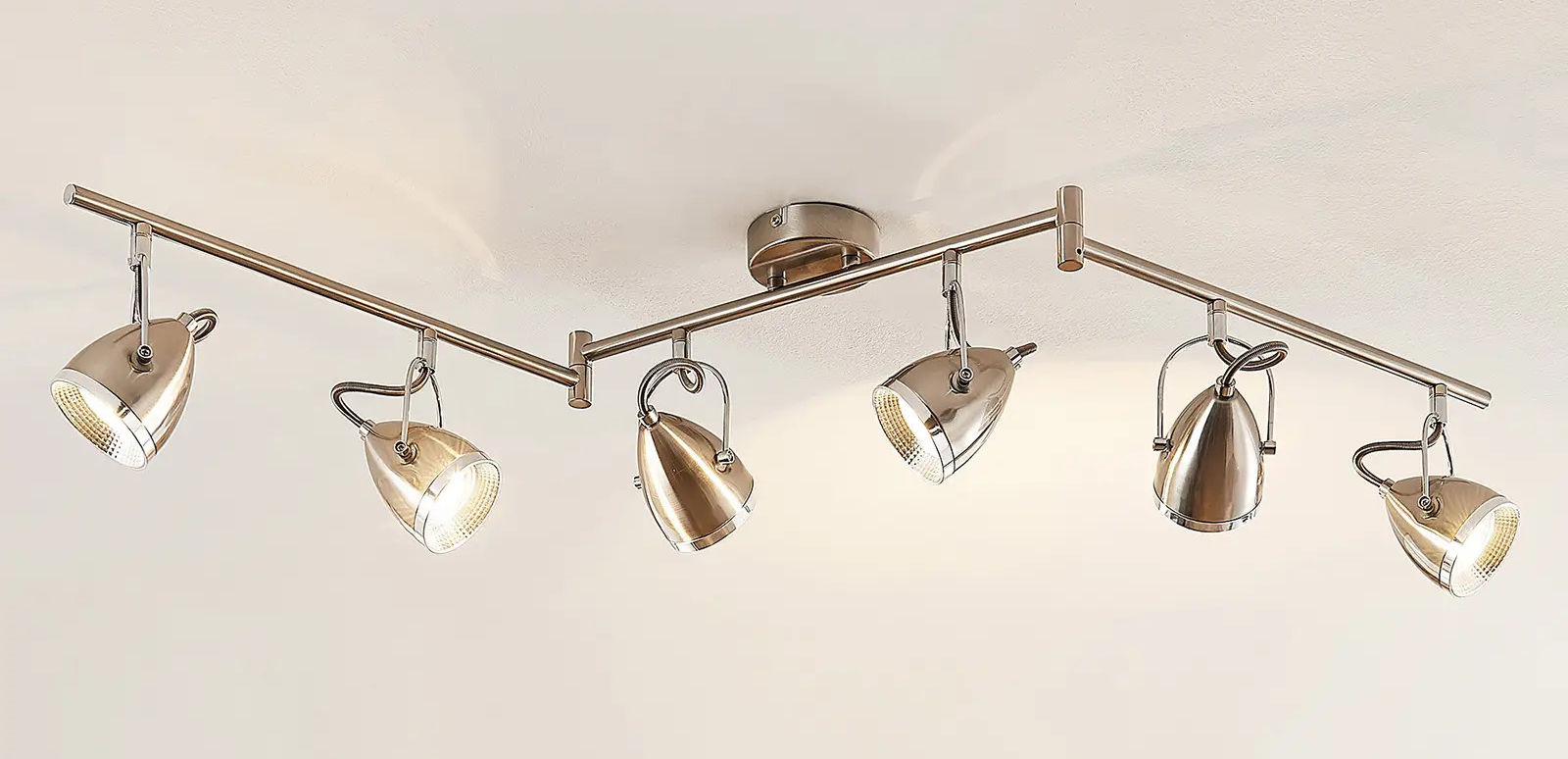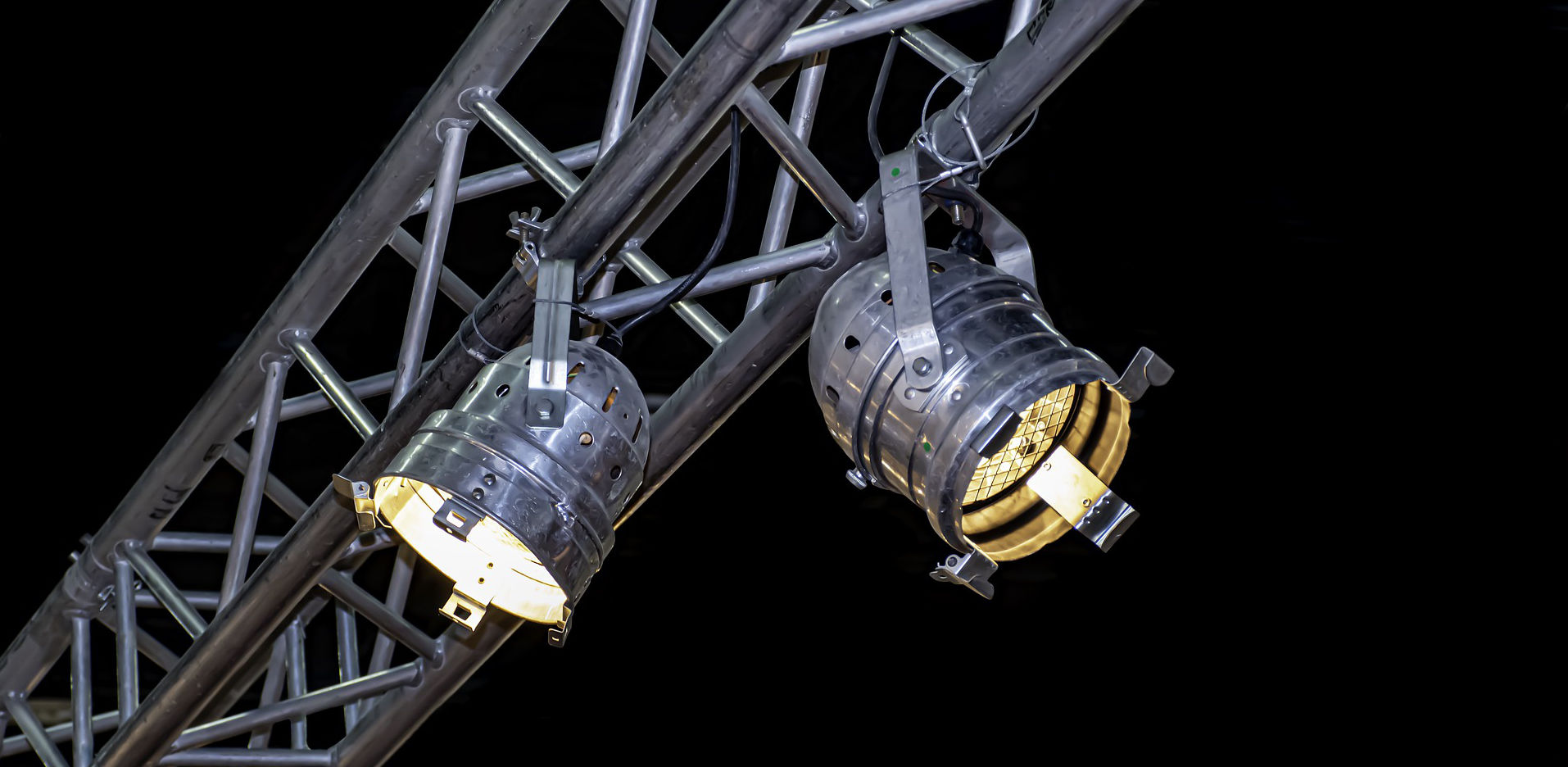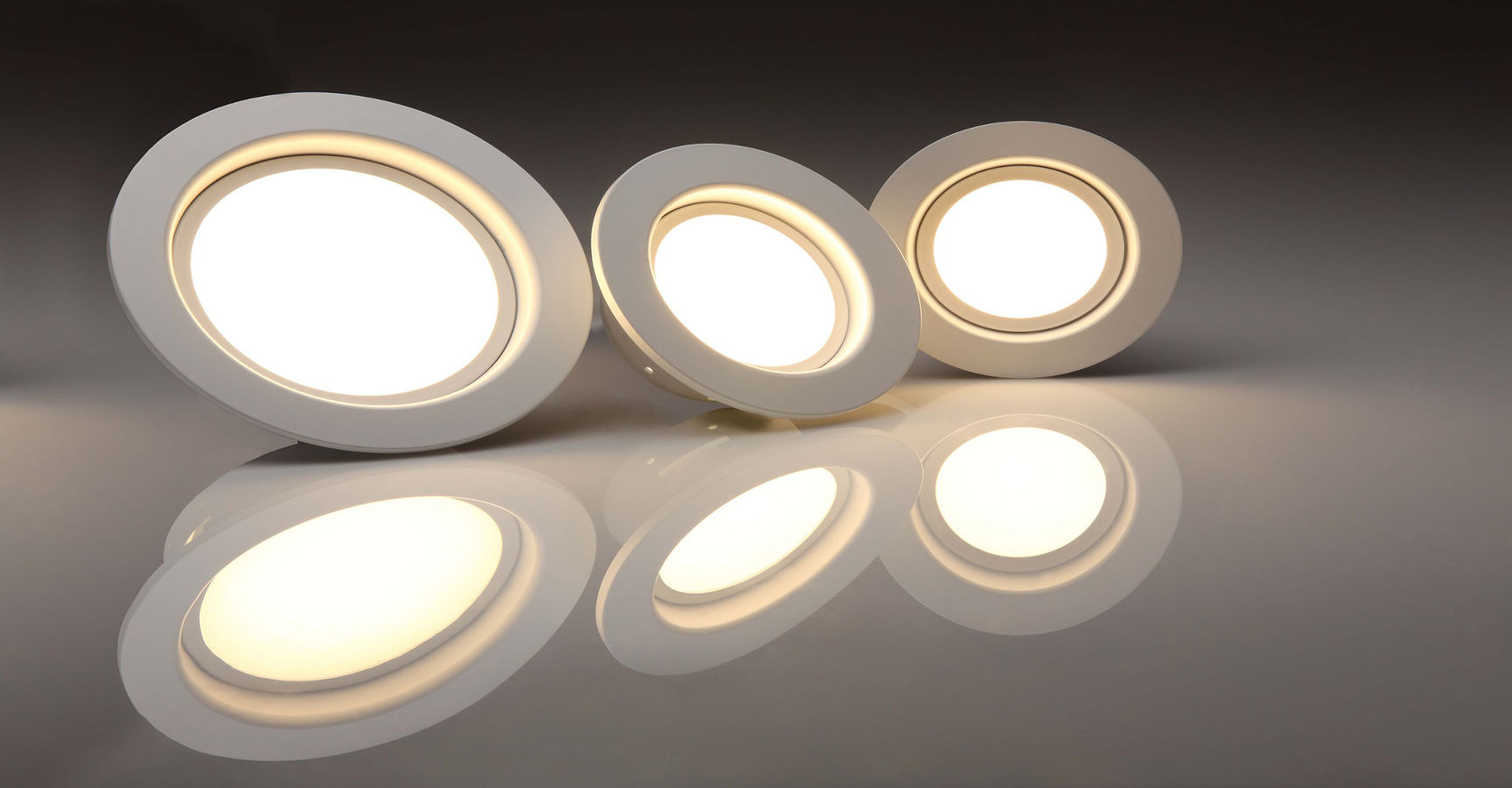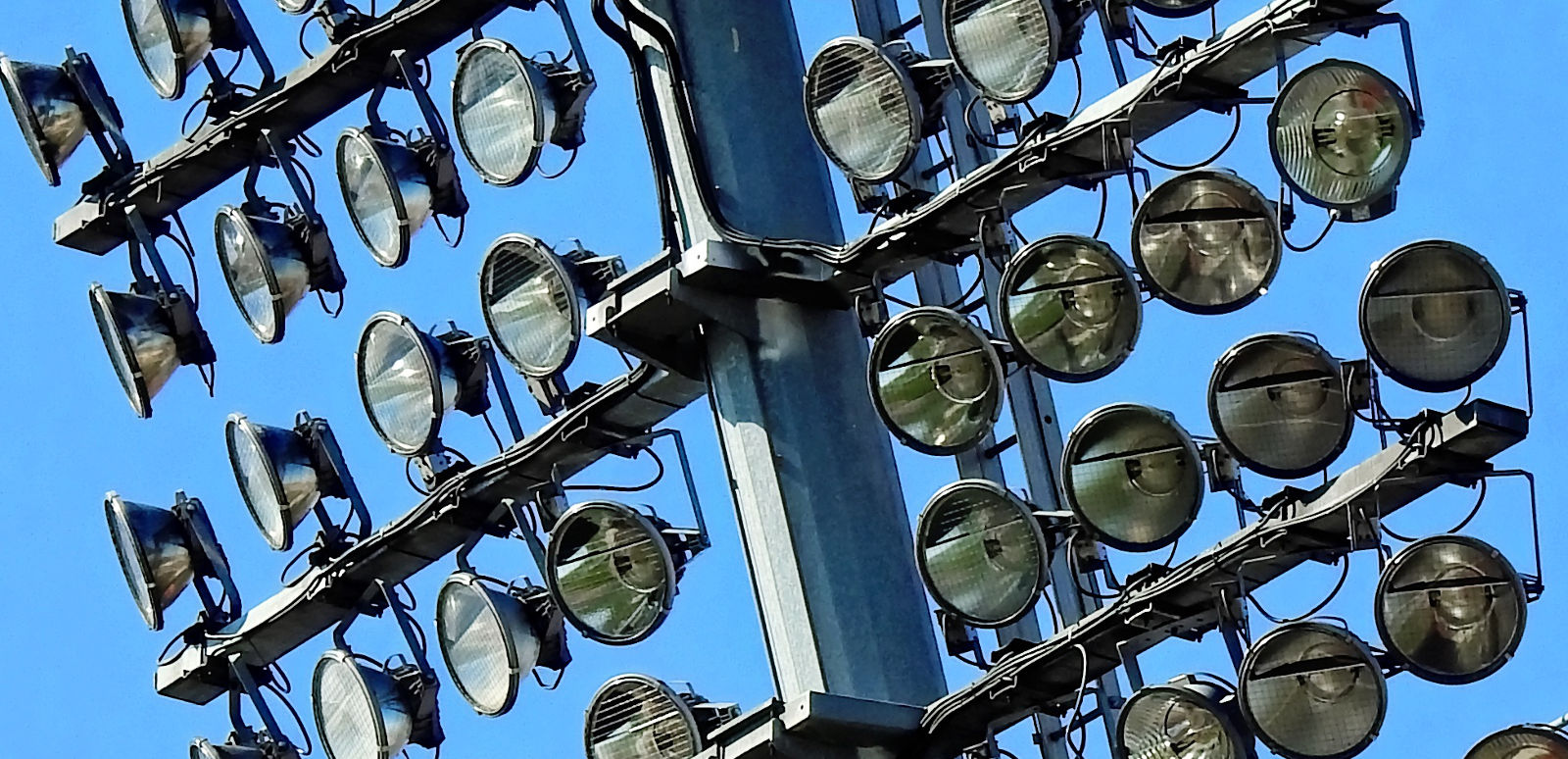PVD metalizing for lamps and accessories
Lamps, spotlights and structures with PVD: the functional aspects of PVD coatings in lighting.
Among the most highly desired characteristics in the field of metalizing spotlights and reflectors, the most specific are a shiny aesthetic finish, resistance to external agents, and an extended lifetime.

PVD metalizing can grant plastics the properties of metals
The reflective surfaces of lamps are subject to PVD metalizing (physical vapour deposition) obtain a smooth, very shiny finish that captures and amplifies light, providing significant energy savings.
PVD metalizing allows any type of material or item to be coated with metals and alloys, like Aluminium Nitride, and can modify the surface characteristics of objects. Metalizing applications do not just change appearances. They are functional, guaranteeing the metalized surface greater strength over time and resistance to weather, making the components ideal for outdoor use, for example in outdoor spotlights for urban lights, in stadiums, and to illuminate open-air shows.
Aluminium Nitride is a binary composite of Aluminium (Al) and Nitrogen (N2) that belongs in the category of ceramic materials. Under stoichiometric conditions, it consists of 50% Aluminium and 50% Nitrogen. Its main physical characteristics are:
- Light weight, ρ 326 g/cm3
- Compact hexagon structure
- Good thermal conductivity: ~250 ∙
- Excellent electric isolation
- Young’s Modulus, E ~220 Gape
- Melting temperature: T 2400 °C
- Piezoelectric properties
- Elevated capacity for acoustic wave propagation
- High chemical stability
- High corrosion resistance
- High hardness
Also note that aluminium nitride has a few peculiar physical characteristics which make it a coating that is almost unique of its kind. Specifically, the material provides excellent electrical insulation capacity as well as good thermal conductivity, ideal for heat dissipation in lighting systems. This physical property makes it basically unique among ceramic materials. Furthermore, it has a discrete hardness and elastic modulus, combined with a number of important functional properties, such as being piezoelectric, and high acoustic wave transmission.

Lamps, accessories and load bearing structures with PVD metalizing
Track lighting consists of a series of lamps that slide along a metal or plastic structure, on which adjustable spotlights or suspensions lamps are attached. All the elements that make up the structure can benefit from PVD metalizing to improve their appearance, the resistance to external stresses, and the electric insulation.
Specifically, the most common track lighting systems are those that use spotlights or lamps mounted on tracks built into ceilings: the tracks can be either metal or plastic and can be assembled so as to be almost invisible. Different types of lights can be assembled on these tracks at the same time, to be directed as needed, and that can be removed or moved to other positions with great ease. Track light is often used in lighting design for very large spaces, shops, or other public spaces, even outdoors. The minimalist design of this type of product make it highly suitable for contemporary settings.

PVD metalizing of lamps, light shades, bodies and components for illumination
The scratch-proof appearance of lamps, light shades, bodies and other materials, like brass, steel, zamac, and aluminium, give items a shiny or opaque appearance, uniform colour, and a perfect surface from every viewpoint.
The wide range of colours can be obtained through the deposition of metal alloys, through to the application of pure silver, with results that range from the warm tones of nickel, to the clear tone of chrome, and all shades of shiny grey with stainless steel finish, yellow or red gold, pearl, copper, blue and gunmetal black.
When it is necessary to maintain electric conductivity, a Chrome Nitride base is used.
Chrome nitride is a chrome and nitrogen composite with chemical formula CRMD. It is an interstitial composite with nitrogen atoms that occupy the octahedral holes in the chrome lattice, extremely resistant to corrosion.
Chrome Nitride expresses considerable hardness and has a very tough structure thanks to which it is possible to create layers with greater thicknesses compared to other coatings. Along with excellent corrosion resistance, Chrome Nitride provides an extraordinary barrier to chemical attack. It has excellent resistance to heat loads and is suitable for applications even at high temperatures.
- Good electric conductivity
- Hardness 1800 HV
- NSS corrosion resistance from 400 to 1500 h
- Indicative thickness from 2 to 10 μ
- Low thermal conductivity

The advantages of PVD treatment in the production of lighting systems
PVD coatings for products in the lighting market have advantages that include a wide range of colours, more attractive finishes, mirror-like surfaces, and, as needed, improved insulating or electric conductivity properties. Excellent results can be obtained with PVD coatings based on titanium or zirconium (on their own or combined), copper, chrome and zirconium, chrome and copper, and other combinations based on the required characteristics, when applied to plastic materials (such as Melamine, ABS, PE, or PP) or even metals (such as aluminium, steel, copper, zinc alloys and galvanized steel).
The final hardness depends on a number of factors: on the type and thickness of the PVD film, on the pre-treatment and the load applied. Generally speaking, the hardness of the PVD film increases the effective hardness of the substrates.
Mirror-like PVD coatings can be used to obtain high levels of gloss. Reflectivity measurements performed in the laboratory with a gloss meter have shown that the reflectivity of the surface after application of a Cr-Cu PVD coating increased the value from 32 to 200.
Metalizing with physical vapour deposition is more ecological than traditional electrochemical galvanization. In fact, its environmental impact is null. It does not consume water, does not produce processing waste, and does not use toxic materials.
CM Group adheres to the principles of integrated pollution prevention and control (IPPC) and has an environmental and occupational health and safety industrial policy.




